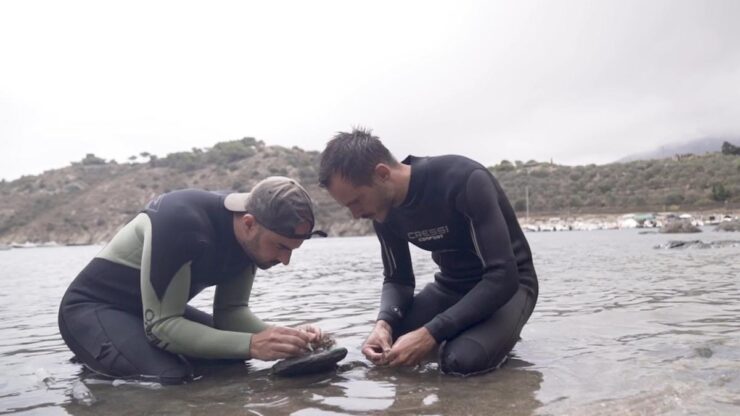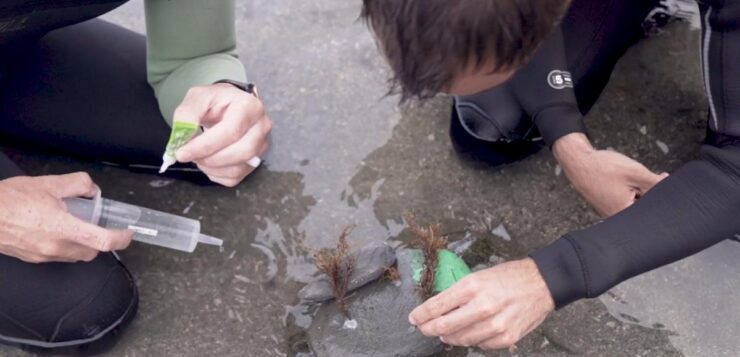The CEAB-CSIC Marine Forest project team has reintroduced, in the Portlligat’s (Cadaqués, Cap de Creus Natural Park), an algae that disappeared from the area in the eighties due to human pressure. It is the species Gongolaria barbata, a brown algae of the genus Cystoseira considered an “engineer” or habitat maker, since it provides shelter and resources for numerous marine organisms.

The researchers cultivated specimens in the Center’s laboratory using an innovative and non-invasive methodology, which avoids the manipulation of adults from the natural populations of this threatened algae.
They placed stones at the bottom of tanks filled with seawater. Then, they deposited fertile branches of the algae (collected without harming the donor populations) to allow the zygotes to settle on the stones at the bottom of the tank. After a few months, the rocks, with the juvenile specimens attached, have been moved and implanted in the sea, in the area of the Cap de Creus Natural Park.
Marine Forest has introduced young specimens of this algae into the waters of Portlligat Bay. Emma Cebrián, the CEAB-CSIC researcher leading the project, explained that “they measure between one and two centimeters. A sufficient size so that small invertebrates do not eat them and so that, within a year or so, they can be fertile and begin to generate new algae. The goal is for them to expand autonomously and recover the marine forest that existed four decades ago.
Restore the health and resilience of ecosystems
These actions are carried out at points where measures have been taken, where the introduced algae have opportunities to progress.
“The fact that the water quality has improved here makes us think that we will probably be able to recover the species in the area,” Cebrián details. “We must think that these algae are very vulnerable populations. At the same time, they are very important because they give structure and biodiversity to the environment. On a terrestrial scale, to give us an idea, they would function like oak or holm oak forests”.
The Marine Forest project includes the subsequent monitoring of the areas where individuals have implanted, to see how they evolve and to be able to determine if the objective of restoring the disappeared or degraded marine forests is achieved and, with them, the biodiversity and health of our marine ecosystems.
The director of the Cabo de Creus natural park, Ponç Feliu, has assured that “if the marine forest of this alga is recovered -for now, the first results obtained by the project are encouraging- it will allow the improvement of the marine ecosystem as a whole. It will be stronger against threats like climate change.”
The action to restore the marine forest that disappeared years ago in this area of Cap de Creus is promoted by the Damm Foundation.


